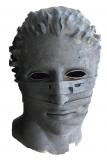Results 11 to 15 of 15
Thread: Diameter for hole
-
01-02-2016, 11:17 AM #11
then READ THE FORUM - ALL YOUR QUESTIONS HAVE ALREADY BEEN ANSWERED MANY MANY MANY TIMES :-)
-
01-04-2016, 02:03 AM #12
While this is indeed how I was taught to make stuff, I think that for the application range in consideration here, their solution is "good enough". But yeah, once you start talking fatigue cycles, high stress and so on... you need to plan the fit accordingly, that means tight tolerances, that means reaming.
-
01-04-2016, 06:39 AM #13
no it doesnt.
It just means making it the right size in the first place :-)
I can get down to repeatable tolearances of several hundredths of a millimetre. Now for most things you're going to make on a desktop 3d printer - that's more than sufficient.
For anything else - well you most likely wouldn't use plastic in the first place.
-
01-04-2016, 05:21 PM #14Staff Engineer

- Join Date
- Jan 2014
- Location
- Oakland, CA
- Posts
- 935
Several hundredths of a millimeter is the difference between a tight fit and a sliding fit. But maybe that doesn't matter to the person who wants to do this.
-
01-05-2016, 02:13 AM #15





 Reply With Quote
Reply With Quote





Extruder not feeding during print,...
04-24-2024, 01:59 AM in Tips, Tricks and Tech Help